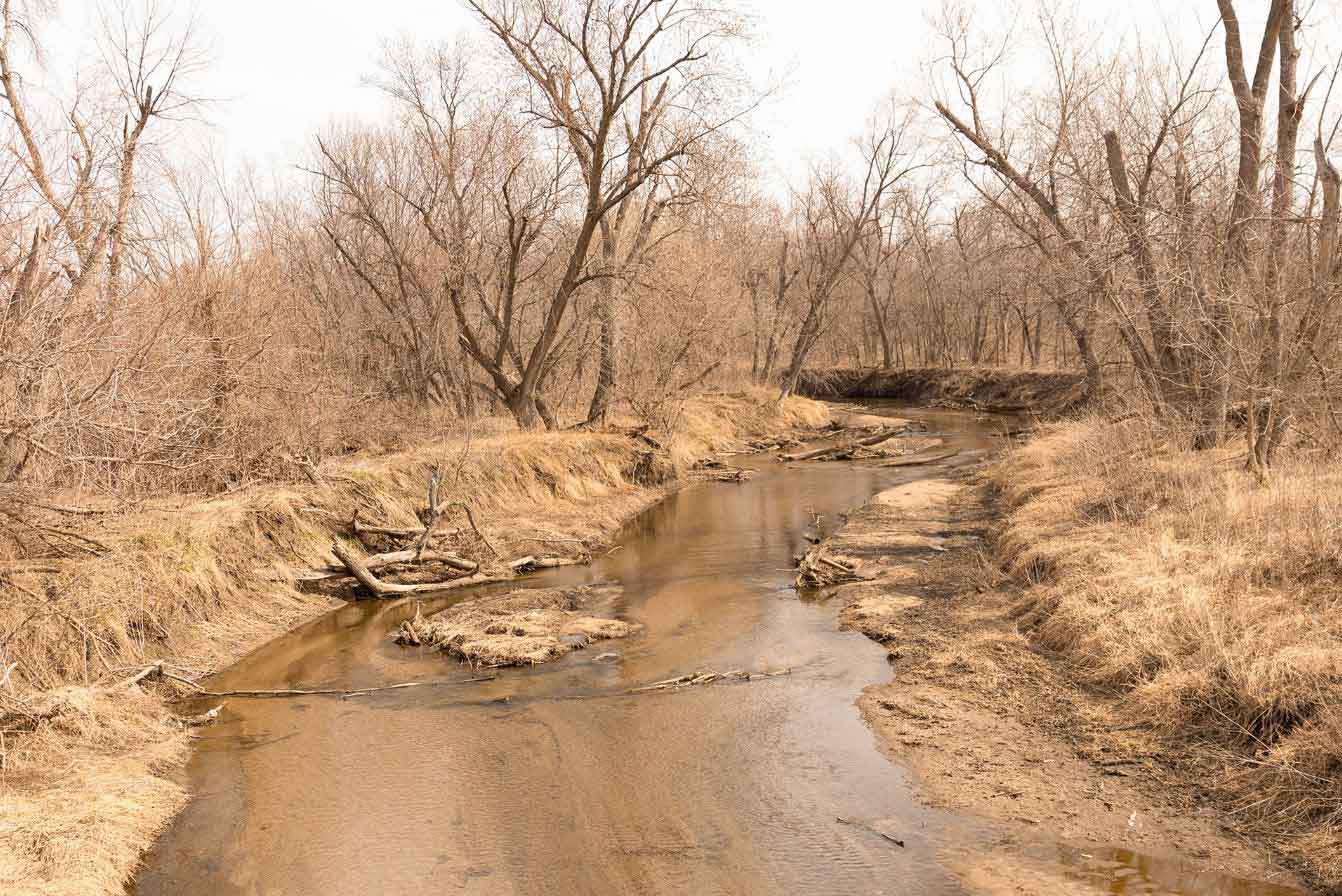
(Photo: Iowa Soybean Association / Joclyn Bushman)
Drought's impact on water quality
October 24, 2024 | Kriss Nelson
The majority of Iowa has suffered through the effects of drought conditions for nearly four years. This year’s spring rains brought some relief, bringing soil moisture back to normal levels for much of the growing season.
“While this is good news for Iowa farmers and the crops they raise, after an extended dry period, soils can be loaded with residual nitrate, which can leach into streams and rivers, causing drinking water issues and large algae blooms,” says Tony Seeman, Iowa Soybean Association (ISA) water lab service manager.
Water quality and drought
The Agriculture Clean Water Alliance (ACWA) water monitoring approach focuses on sampling rivers and the smaller watersheds that contribute to them.
The North and South Raccoon Rivers have nearly 40 sites with drainage areas ranging from 4,000 acres to 2 million acres. Comparing results from these different areas as water moves downstream helps target resources to have the most significant impact and provides feedback about conditions over time.
“What continues to be apparent in looking at water quality results over time is the impact of climatic conditions on nutrient loss,” says Seeman. “Streamflow and nitrogen loss vary widely in response to the annual excess or deficit of precipitation, similar to crop yield.”

Broadening the view of yield (production per area) to include environmental measurements can help to assess the progress toward the Iowa Nutrient Reduction Strategy (INRS) goals.
“Even though both crop and nutrient yields are impacted by weather, there are a couple of key differences,” he says. “First, crop yields can suffer poor performance due to too little or too much water, while nitrate yield in rivers is generally more problematic as conditions get wetter.”
Once the crop is harvested, the grain yield is realized, and the cycle is over. However, in soil and water, there can be a lag where things that happened a year or two earlier can still impact the levels of nitrate yield.
“Because this cycle is irregular and often longer, assessing how well agronomic and conservation practices are addressing the issues is confounded,” says Seeman. “In 2024, we were at the point in the cycle where past nutrients were likely to be delivered to tiles and streams.”
Conservation practices impact on water quality
Implementation of various in-field and edge-of-field practices to address nitrate-nitrogen loss, like cover crops, saturated buffers and wetlands, is ongoing.
These practices are known to improve water quality individually, but like everything else, their performance will vary from one year to the next.
“The question is whether they are having enough of an impact in the watershed to reduce levels in the stream,” says Seeman. “Until the scale of adoption is overwhelming, it will be difficult to detect significant reductions at the watershed scale.”
If water quality continues to improve in streams where these practices are used, Seeman hopes it could boost Iowa farmers' adoption of these practices statewide.
Analyzing analog years
While many farmers use grain yield and profit as the ultimate indicators of how well a farm is performing, Seeman believes they are flawed measurements.
Looking at plot data with the same practices over many years rarely shows a steady or increasing yield. The year-to-year variability generally has a more significant impact than any single practice, so it is important to replicate and continue studies over time to reach a consistent result or conclusion.
Similarly, if the yield for a particular field decreases in one year, that doesn’t necessarily mean the farmer did anything different or worse.
“It wouldn’t make sense to call a farmer great in a high-yielding year and say that same farmer is bad when conditions are less than ideal and yield drops,” says Seeman. “By the same token, looking at water quality results claiming things are bad during wet times and good during dry times will miss the mark on what is happening in the watershed.”
One way to overcome this variability is by using analog years. While the weather is never the same in two years for an area, it can be cyclical, and different years can be somewhat similar. “Comparing wet years to wet years and dry years to dry years gives a more realistic picture than just comparing one year to the next,” he says.
Another technique for evaluating environmental data over time is to use a paired approach. By comparing two different but similar areas, we can look for differences attributed to something other than the overall conditions affecting both areas.
Sign up for water monitoring on your farm
ISA’s Research Center for Farming Innovation (RCFI) conservation programming involves monitoring farmers’ water quality, providing feedback and analyzing their water quality results annually.
Seeman is accepting applications for next year’s program.
“Whether you have implemented a new management practice in one field, such as cover crops, and want to compare the water quality results to another field without cover crops, or if you simply want to understand the conditions of the water leaving your fields, we can help you,” he says.
ISA’s water monitoring team will regularly collect samples from tile outlets, intakes or streams. Farmers will then receive updated reports throughout the growing season and a comprehensive analysis at the end of the growing year.
To learn more about ISA’s water quality monitoring program, contact Seeman at
515-334-1042 or
aseeman@iasoybeans.com.
Back